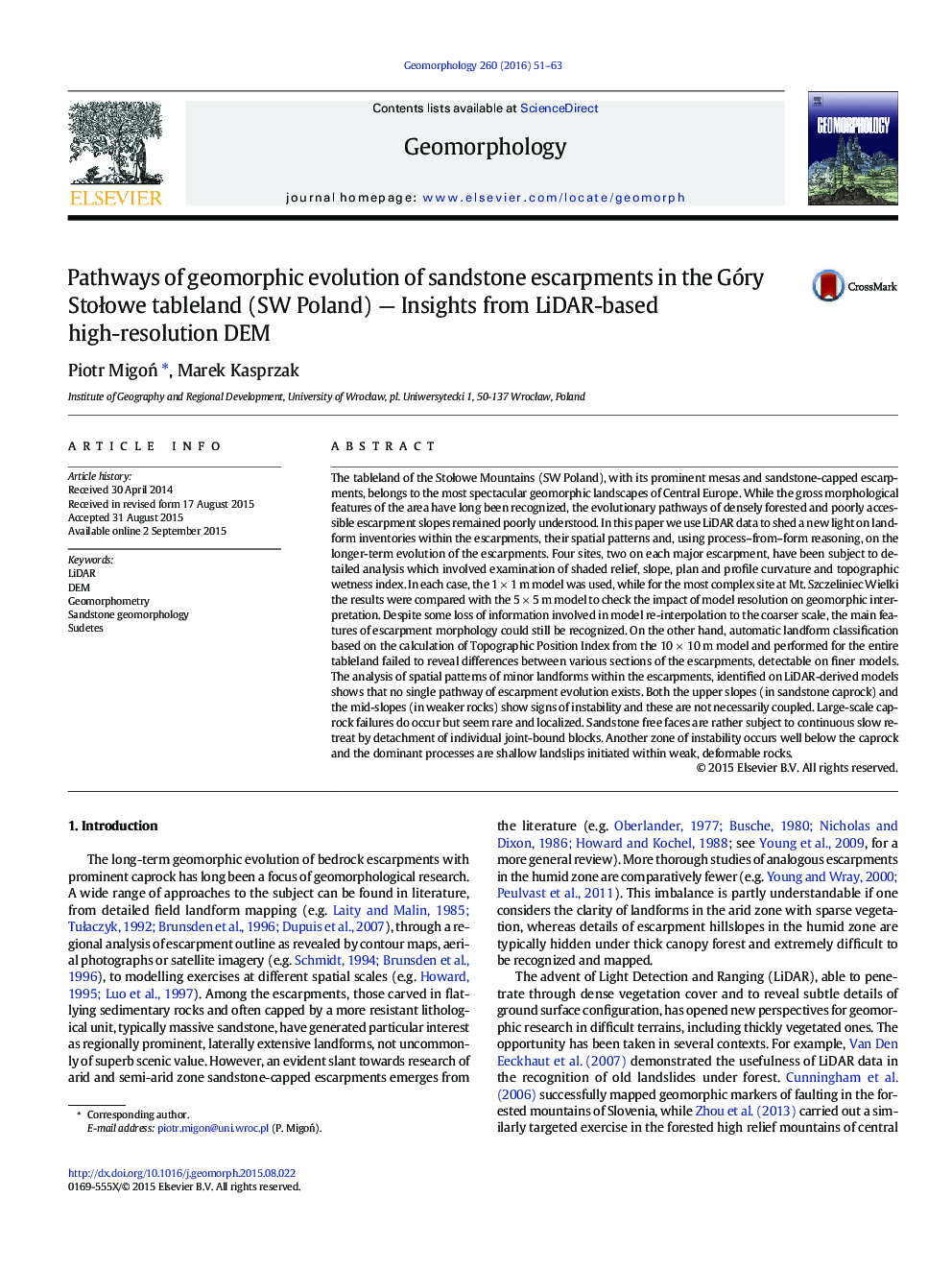| Article ID | Journal | Published Year | Pages | File Type |
|---|---|---|---|---|
| 4684086 | Geomorphology | 2016 | 13 Pages |
•LiDAR DEM helped to recognize landform patterns at sandstone-capped escarpments.•Slopes, plan curvature, profile curvature, and Topographic Wetness Index employed•Models of different resolution tested•Topographic Position Index failed to show specific features of escarpments.
The tableland of the Stołowe Mountains (SW Poland), with its prominent mesas and sandstone-capped escarpments, belongs to the most spectacular geomorphic landscapes of Central Europe. While the gross morphological features of the area have long been recognized, the evolutionary pathways of densely forested and poorly accessible escarpment slopes remained poorly understood. In this paper we use LiDAR data to shed a new light on landform inventories within the escarpments, their spatial patterns and, using process–from–form reasoning, on the longer-term evolution of the escarpments. Four sites, two on each major escarpment, have been subject to detailed analysis which involved examination of shaded relief, slope, plan and profile curvature and topographic wetness index. In each case, the 1 × 1 m model was used, while for the most complex site at Mt. Szczeliniec Wielki the results were compared with the 5 × 5 m model to check the impact of model resolution on geomorphic interpretation. Despite some loss of information involved in model re-interpolation to the coarser scale, the main features of escarpment morphology could still be recognized. On the other hand, automatic landform classification based on the calculation of Topographic Position Index from the 10 × 10 m model and performed for the entire tableland failed to reveal differences between various sections of the escarpments, detectable on finer models. The analysis of spatial patterns of minor landforms within the escarpments, identified on LiDAR-derived models shows that no single pathway of escarpment evolution exists. Both the upper slopes (in sandstone caprock) and the mid-slopes (in weaker rocks) show signs of instability and these are not necessarily coupled. Large-scale caprock failures do occur but seem rare and localized. Sandstone free faces are rather subject to continuous slow retreat by detachment of individual joint-bound blocks. Another zone of instability occurs well below the caprock and the dominant processes are shallow landslips initiated within weak, deformable rocks.
